Jellyfish 101
What You Need to Know Before You Go to North Carolina Beaches
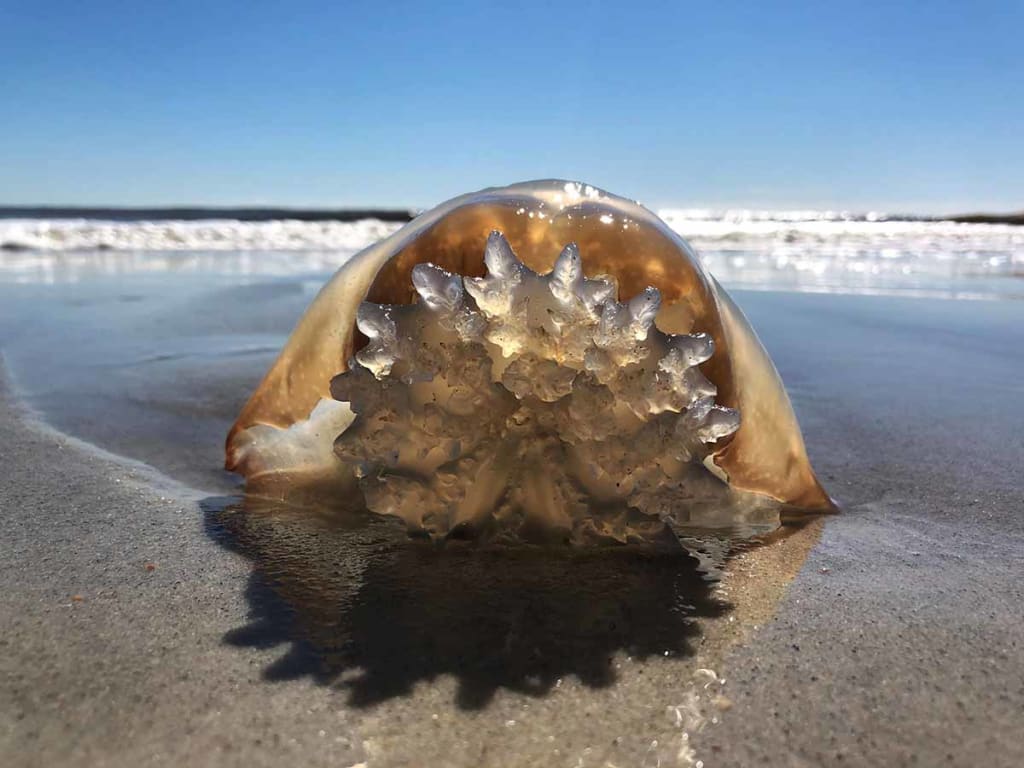
Beach season is in full swing!
You’ve been dreaming of blue skies and sparkling waves, your toes in the sand, and the sun on your skin for way too long!
We’ve finally shaken off the worst year in history, and it’s time to celebrate with family and friends! As you pack your beach bag, there are a few things to add, in the event of a jellyfish sting.
What Types of Jellyfish Are in North Carolina?
North Carolina is home to at least a dozen types of creatures we call “jellyfish”, though at least half of them are not true marine jellyfish, but “comb jellyfish”.
Comb jellies don’t propel themselves by pumping water through their bodies like true jellyfish. Instead, they have eight rows of cilia (hair-like structures) all around their bodies. By waving their cilia in a synchronized pattern, they move through the ocean.
And the best news? Comb jellyfish don’t sting.
True Jellyfish
North Carolina has a large variety of true jellyfish, all capable of delivering a sting, ranging from hardly noticeable with a minor rash to severe pain with a blistering welt. Jellyfish washed up on the beach can still sting you, even days after they’ve died.
We do not have any jellyfish in North Carolina that can deliver a fatal sting like the box jellyfish in Australia. It is possible, however, that an individual can have a severe allergic reaction to any type of jellyfish sting and require medical attention.
The following varieties are the most common types of stinging jellyfish found in North Carolina waters.
- Moon Jellyfish
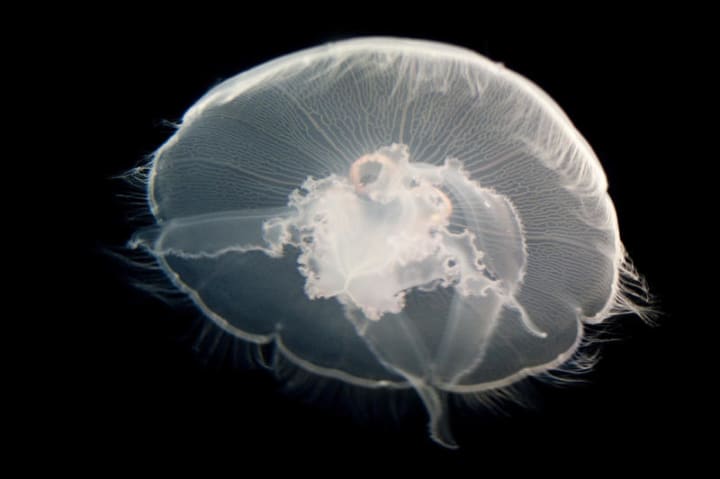
The moon jelly is one of the most common jellyfish on the North Carolina coast. Its sting is usually very mild, often resulting only in an itchy rash.
Moon jellies are mostly translucent, with a slight pinkish color, and on average measure six to eight inches across the top of the “bell”. They have four horseshoe-shaped structures toward the center and short, hair-like tentacles.
- Mushroom Jellyfish
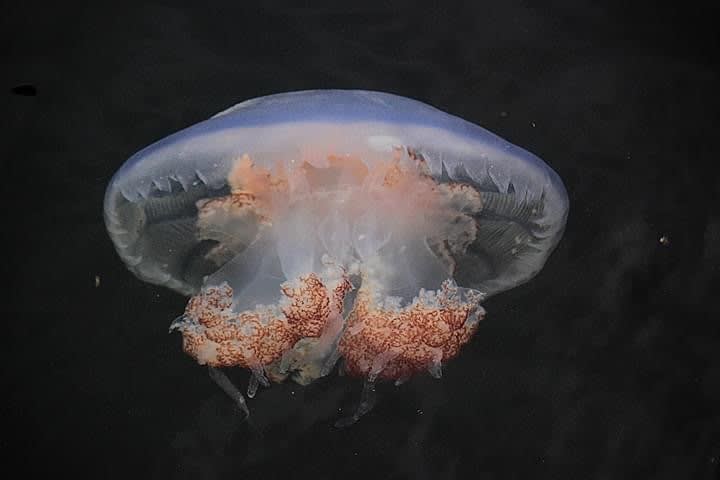
Mushroom jellyfish are usually eight to ten inches in diameter, although they’ve been recorded at 20 inches across. They’re not quite translucent, instead having a tan or yellowish hue, and the edges of the bell are often ringed in a light brown.
They don’t possess tentacles, making it unlikely to be stung by them, though they do have stinging cells located inside the bell — you could conceivably be stung if you got your hand tangled up inside one. Their sting is classified as mild. They have eight short appendages (arms) which don’t sting; the arms are usually a light brown color.
- Cannonball Jellyfish
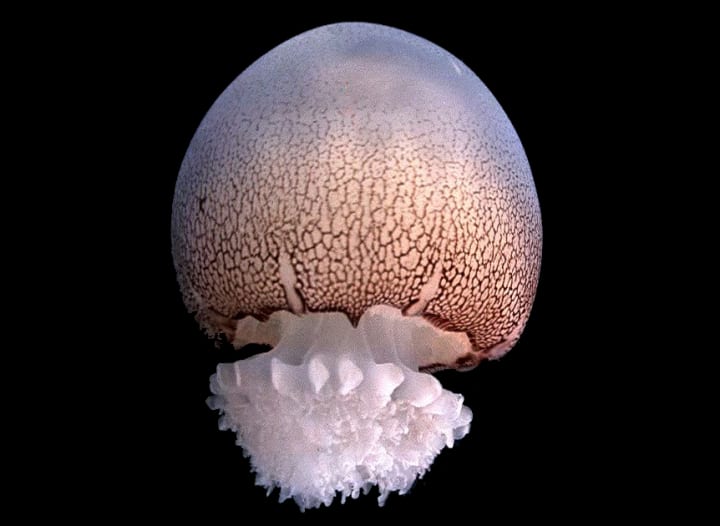
Cannonball jellyfish are the most common jellyfish in the waters of North Carolina. They have a dome shaped bell which is off white with an all-over pattern in brown. The bell averages seven to ten inches across and five inches tall.
Also without tentacles, cannonball jellyfish have a cluster of sixteen short “oral” arms that they use as an aid to swimming, and to capture and eat their prey. When threatened, they release a toxin that can paralyze or kill their enemy, but the toxin is rarely dangerous to humans, usually resulting in a minor skin irritation. There have been a few recorded instances of the cannonball jellyfish toxin causing heart arrhythmia in humans and animals.
The cannonball jellyfish is commercially fished in Georgia and exported to Japan, Thailand and China. Dried cannonball jellyfish is valued as a high-protein food in Asian culture, in which it is also believed to have medicinal properties.
- Lion’s Mane Jellyfish
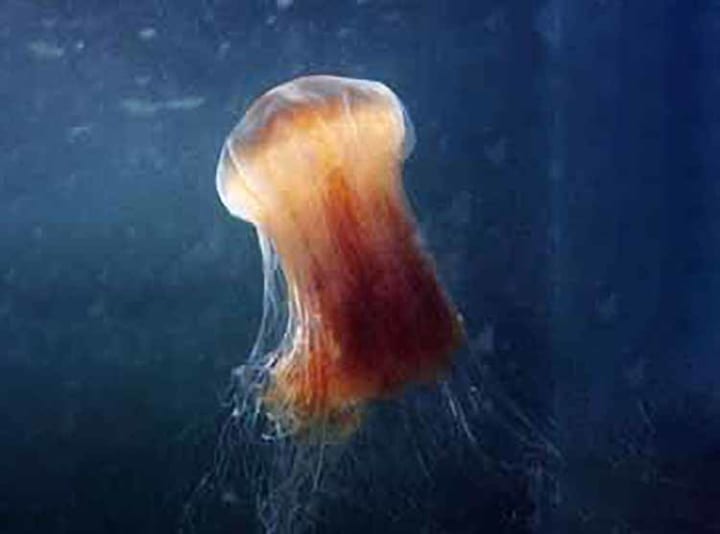
The largest species of jellyfish in North Carolina is the lion’s mane, known for its long, vibrantly colored tentacles. It’s considered a winter jellyfish and is not often spotted locally in the height of summer, preferring the cooler waters of fall and winter.
The lion’s mane jellyfish typically measures six to twelve inches across the bell, though it’s not uncommon to see bells measuring twenty inches across. In fact, the largest lion’s mane jellyfish ever recorded was found in Massachusetts and measured seven and a half feet across the bell, with tentacles 120-feet long!
The lion’s mane jelly gives a moderate to severe sting and can result in a blistering burn on the skin. It’s the only local jellyfish that’s orange in color, so they’re easy to spot. Do your best to stay clear.
- Sea Nettles
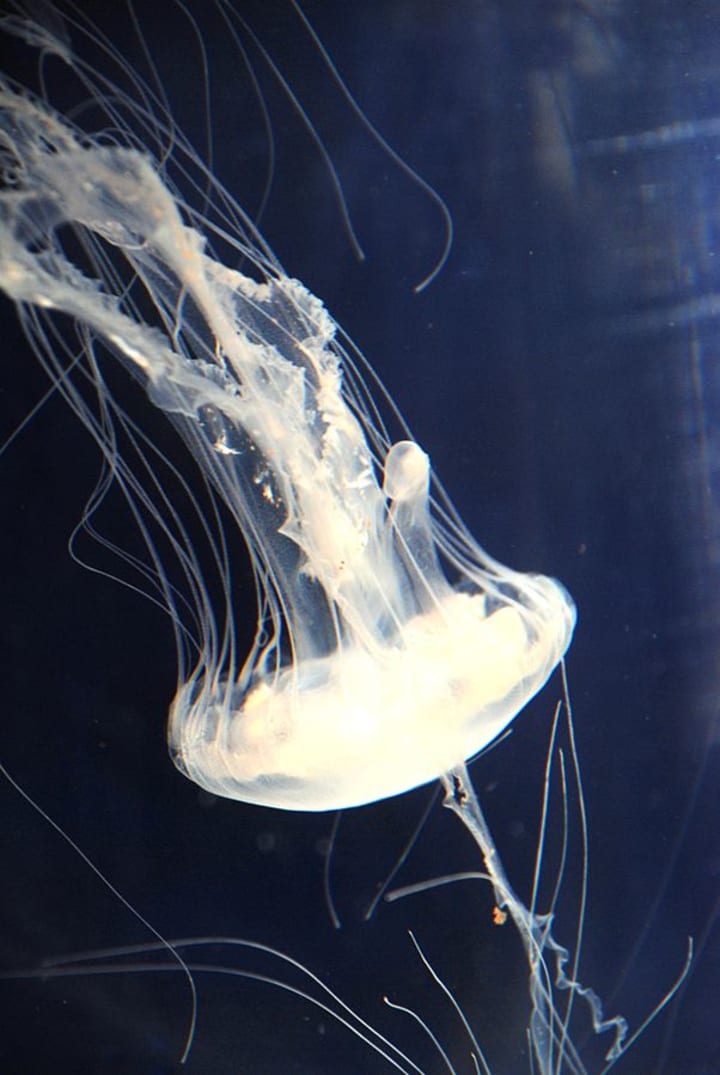
Sea Nettles are the second largest jellyfish in North Carolina. They can measure up to sixteen inches across and are semi-translucent with a pale pink or yellowish hue, marked with small white dots. They have long, trailing, semi-translucent tentacles that sting.
Their sting is moderate to severe, resulting in a painful rash, which is reported to lessen in discomfort after the initial twenty minutes. The toxin released from their tentacles is powerful enough to kill small prey, such as minnows, or stun their would-be predators until they make their getaway.
- Sea Wasp
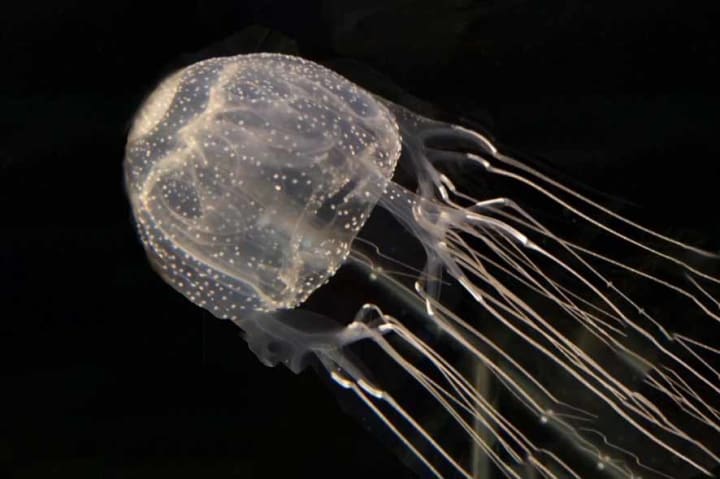
If there’s one jellyfish in North Carolina you want to avoid, it’s the sea wasp.
The sea wasp is transparent, with a rounded boxy form. The bell is about five inches tall and five to six inches across, with seven to nine tentacles that reach lengths of nine to fourteen feet. The two outer tentacles are slightly pink, and the inner ones are yellowish white.
The sea wasp is in the same class as the highly dangerous and often deadly box jellyfish of Australia. The sea wasp of North Carolina carries a sting that feels like a jolt of electricity, followed by a severe, burning rash that often blisters.
Its sting is classified as moderate to very severe, and it is the most common jellyfish sting that leads to a hospital trip in our state. If you are stung on the face or neck by a sea wasp jelly, it’s advised you seek medical attention immediately.
What to Do if You Are Stung by a Jellyfish
Jellyfish tentacles have scores of stinging cells, which each contain structures called “nematocysts”. When confronted by a perceived threat (which may be your leg, innocently brushing against a tentacle) the nematocyst shoots out tiny, barbed stingers filled with venom, which get embedded in your skin.
There are a lot of old wives’ tales out there about remedies for jellyfish stings. The modern, scientific advice is this:
- Apply white vinegar to the area to neutralize the venom
- Use tweezers to remove any tentacle bits that are stuck to the skin
- Take an over-the-counter pain reliever
- Don’t rinse with fresh water or sea water
- Don’t apply urine!
- Don’t rub at the sting or scrape it to remove the stingers
- Don’t use ice on a jellyfish sting
If you experience difficulty in breathing, chest pain, swelling of the tongue, face or throat, nausea, dizziness, blurry vision or any other serious symptoms, seek medical treatment immediately.
How to Avoid a Jellyfish Sting
- Look for posted warnings
Most beaches will post a hazard warning if jellyfish have been seen in large numbers.
- Swim at Supervised Beaches
Swimming only at beaches that have lifeguards posted will lessen your chances of being stung. Lifeguards are trained to be on the lookout for hazards in the water, including jellyfish.
- Be Aware of Your Surroundings
Always stay vigilant when swimming in the ocean. Never forget there are living creatures sharing the space with you, and some of them may be dangerous.
- Be Prepared
Be prepared so a jellyfish sting doesn’t spoil your fun. Consider carrying a small plastic bottle (recycle a travel size shampoo bottle) of white vinegar and a pair of tweezers in your beach bag. Those items, along with Tylenol or aspirin, might stop a jellyfish sting from ruining your day at the beach!
References:
https://coastalreview.org/2020/12/strange-beauty-jellyfish-of-the-nc-coast/
https://commons.wikimedia.org
https://kidshealth.org/en/kids/jellyfish.html
https://www.mayoclinic.org/diseases-conditions/jellyfish-stings/diagnosis-treatment/drc-20353290
About the Creator
Shell St. James
Shell St. James is a New England author living in an 1895 farmhouse with her musician soulmate, feline muse, and a benevolent ghost. Her novel, "The Mermaid of Agawam Bay", is available on Amazon. Find out more at www.shellstjames.com
Enjoyed the story? Support the Creator.
Subscribe for free to receive all their stories in your feed. You could also pledge your support or give them a one-off tip, letting them know you appreciate their work.






Comments
There are no comments for this story
Be the first to respond and start the conversation.